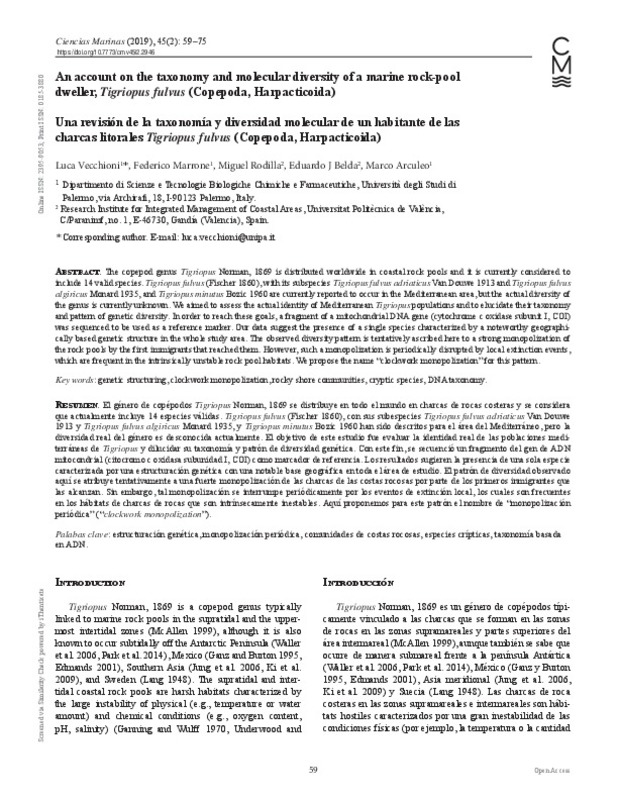JavaScript is disabled for your browser. Some features of this site may not work without it.
Buscar en RiuNet
Listar
Mi cuenta
Estadísticas
Ayuda RiuNet
Admin. UPV
An account on the taxonomy and molecular diversity of a marine rock-pool dweller, Tigriopus fulvus (Copepoda, Harpacticoida)
Mostrar el registro completo del ítem
Vecchioni, L.; Marrone, F.; Rodilla, M.; Belda, E.; Arculeo, M. (2019). An account on the taxonomy and molecular diversity of a marine rock-pool dweller, Tigriopus fulvus (Copepoda, Harpacticoida). Ciencias Marinas. 45(2):59-75. https://doi.org/10.7773/cm.v45i2.2946
Por favor, use este identificador para citar o enlazar este ítem: http://hdl.handle.net/10251/155128
Ficheros en el ítem
Metadatos del ítem
| Título: | An account on the taxonomy and molecular diversity of a marine rock-pool dweller, Tigriopus fulvus (Copepoda, Harpacticoida) | |
| Otro titulo: |
|
|
| Autor: | Vecchioni, Luca Marrone, Federico Arculeo, Marco | |
| Entidad UPV: |
|
|
| Fecha difusión: |
|
|
| Resumen: |
[ES] El género de copépodos Tigriopus Norman, 1869 se distribuye en todo el mundo en charcas de rocas costeras y se considera
que actualmente incluye 14 especies válidas. Tigriopus fulvus (Fischer 1860), con sus subespecies ...[+]
[EN] The copepod genus Tigriopus Norman, 1869 is distributed worldwide in coastal rock pools and it is currently considered to include 14 valid species. Tigriopus fulvus (Fischer 1860), with its subspecies Tigriopus fulvus ...[+]
|
|
| Palabras clave: |
|
|
| Derechos de uso: | Reserva de todos los derechos | |
| Fuente: |
|
|
| DOI: |
|
|
| Editorial: |
|
|
| Versión del editor: | https://doi.org/10.7773/cm.v45i2.2946 | |
| Agradecimientos: |
We wish to thank Prof. Vezio Cottarelli for the help he
provided us with the collection of some samples of T. fulvus
and for the stimulating discussions we had on the topic of
this manuscript. G Alfonso (University of ...[+]
|
|
| Tipo: |
|









